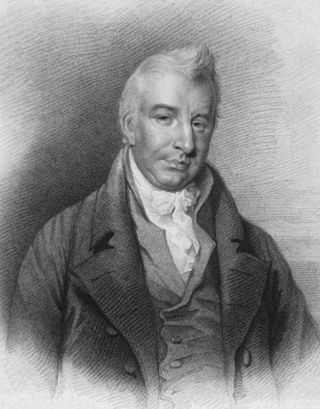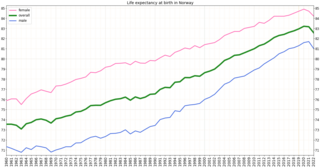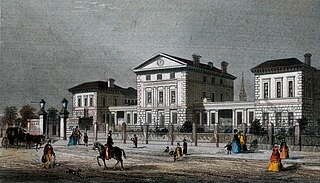Related Research Articles

A pandemic is an epidemic of an infectious disease that has spread across a large region, for instance multiple continents or worldwide, affecting a substantial number of individuals. Widespread endemic diseases with a stable number of infected individuals such as recurrences of seasonal influenza are generally excluded as they occur simultaneously in large regions of the globe rather than being spread worldwide.
Public Health – Seattle & King County (PHSKC) is the public health department in King County, Washington, United States. It is jointly managed by the City of Seattle and King County governments, serving approximately 2 million residents. Some of its services include King County Medic One, trans fat and menu-labeling regulation, online restaurant inspections, emergency preparedness, family planning and reproductive health services.

William Henry Duncan, also known as Doctor Duncan, was an English doctor who worked in Liverpool as its first Medical Officer of Health.

Buffalopox is caused by buffalopox virus (BPXV); it is a Poxviridae for which the natural host is buffalo. It mainly infects buffalo but has been known to infect cows and humans. It is classified in the Orthopoxvirus (OPV) genus and the subfamily Chordopoxvirinae. The appearance of buffalopox follows a pattern and is described as emerging and re-emerging, it commonly occurs in sporadic and epidemic forms in domestic and commercial farm settings.
Globalization, the flow of information, goods, capital, and people across political and geographic boundaries, allows infectious diseases to rapidly spread around the world, while also allowing the alleviation of factors such as hunger and poverty, which are key determinants of global health. The spread of diseases across wide geographic scales has increased through history. Early diseases that spread from Asia to Europe were bubonic plague, influenza of various types, and similar infectious diseases.
The United States raw milk debate concerns issues of food safety and claimed health benefits of raw milk, and whether authorities responsible for regulating food safety should prohibit sale of raw milk for consumption.
The health of slaves on American plantations was a matter of concern to both slaves and their owners. Slavery had associated with it the health problems commonly associated with poverty. It was to the economic advantage of owners to keep their working slaves healthy, and those of reproductive age reproducing. Those who could not work or reproduce because of illness or age were sometimes abandoned by their owners, expelled from plantations, and left to fend for themselves.

John Ferriar was a Scottish physician and a poet, most noted for his leadership of the Manchester Infirmary, and his studies of the causes of diseases such as typhoid.
Health in Afghanistan remains poor but steadily improving. It has been negatively affected by the nation's environmental issues and the decades of war since 1978. The Ministry of Public Health oversees all matters concerning the health of the country's residents.

James Niven was a Scottish physician, perhaps best known for his work during the Spanish Flu outbreak in 1918 as Manchester's Medical Officer of Health. He held that position for 28 years (1894–1922), until he retired. He had previously been Oldham's Medical Officer of Health. He lectured in Public Health in Manchester. He committed suicide in 1925.

The swill milk scandal was a major adulterated food scandal in the state of New York in the 1850s. The New York Times reported an estimate that in one year 8,000 infants died from swill milk.
Halliday Gibson Sutherland (1882–1960) was a Scottish medical doctor, writer, opponent of eugenics and the producer of Britain's first public health education cinema film in 1911.

Diseases and epidemics of the 19th century included long-standing epidemic threats such as smallpox, typhus, yellow fever, and scarlet fever. In addition, cholera emerged as an epidemic threat and spread worldwide in six pandemics in the nineteenth century. The third plague pandemic emerged in China in the mid-nineteenth century and spread worldwide in the 1890s.

Health in Norway, with its early history of poverty and infectious diseases along with famines and epidemics, was poor for most of the population at least into the 1800s. The country eventually changed from a peasant society to an industrial one and established a public health system in 1860. Due to the high life expectancy at birth, the low under five mortality rate and the fertility rate in Norway, it is fair to say that the overall health status in the country is generally good.

Heartlands Hospital is an acute general hospital in Bordesley Green, Birmingham, England. It is managed by University Hospitals Birmingham NHS Foundation Trust.
The Detroit Health Department has provided public health services, and has partnered with neighborhoods and community stakeholders, for over 100 years. The department was able to grow from its focus on communicable diseases to one that had over 40 programs and services at one point. When budgets began to deteriorate, many of those programs and services ended. With the city on the verge of bankruptcy, most of the department's remaining services were contracted out to a private agency, the Institute for Population Health (IPH). However, upon successful progress post-bankruptcy the City of Detroit was able to take control of many of the services that were transitioned to IPH in 2014 and 2015. In 2015, Mayor Mike Duggan hired Dr Abdul El-Sayed to run the department, and he stayed in that role for a little over a year before leaving to run for Governor of Michigan. In February 2017, Dr. Joneigh Khaldun, a practicing emergency physician and former Chief Medical Officer of the Baltimore City Health Department, was appointed to lead the department.

An outbreak of smallpox in Bradford in 1962 first came to attention on 11 January 1962, when a cook from the children's hospital in Bradford, West Riding of Yorkshire, England, presented with an unexplained fever and was found to have changes in her blood similar to another sick person at the nearby St Luke's Hospital, both samples appearing compatible with smallpox. The index case was later discovered to be a nine-year old girl who arrived in the UK on 16 December 1961 from Karachi, Pakistan, where there was an ongoing epidemic of smallpox.

A fever hospital or isolation hospital is a hospital for infectious diseases such as scarlet fever and smallpox. Their purpose is to treat affected people while isolating them from the general population. Early examples included the Liverpool Fever Hospital (1801) and the London Fever Hospital (1802). Other examples occurred elsewhere in the British Isles and India.
The International Congress on Tuberculosis was a series of major congresses held between 1899 and 1912 in which scientists and physicians exchanged information on tuberculosis, a significant cause of death at the time.

The Edinburgh City Hospital was a hospital in Colinton, Edinburgh, opened in 1903 for the treatment of infectious diseases. As the pattern of infectious disease changed, the need for in-patients facilities to treat them diminished. While still remaining the regional centre for infectious disease, in the latter half of the 20th century the hospital facilities diversified with specialist units established for respiratory disease, ear, nose and throat surgery, maxillo-facial surgery, care of the elderly and latterly HIV/AIDS. The hospital closed in 1999 and was redeveloped as residential housing, known as Greenbank Village.
References
- ↑ Roger, Richard (1995). Housing in Urban Britain 1780-1914. Economic History Society. p. 54.
- ↑ Manchester Public Health Annual report. Manchester Joint Health Unit. 2006.
- ↑ "Health Profiles". Network of Public Health Observatories. 2015. Archived from the original on 23 April 2016. Retrieved 4 January 2016.
- ↑ "Poverty in Manchester – people face 'hunger and fear'". Poverty and Social Exclusion (PSE). Retrieved January 21, 2019.
- ↑ Brockbank, William (1952). Portrait of a Hospital. London: William Heinemann. pp. 28–42.
- ↑ Engels, Friedrich (1845). The Condition of the Working Class in England.
- ↑ "A history of Little Ireland". Pride of Manchester. Retrieved 4 January 2016.
- ↑ Ellwood, Willis; Tuxford, Ann (1984). Some Manchester Doctors: A Biographical Collection to Mark the 150th Anniversary of the Manchester Medical Society 1834-1984. Manchester: Manchester Medical Society. p. 99.
- ↑ Atkins, P J (2000). Milk consumption and tuberculosis in Britain, 1850-1950 (PDF). Durham University. p. 9. Retrieved 23 December 2021.
- ↑ "A Healthier Manchester". Manchester CCGs. Retrieved 25 January 2016.